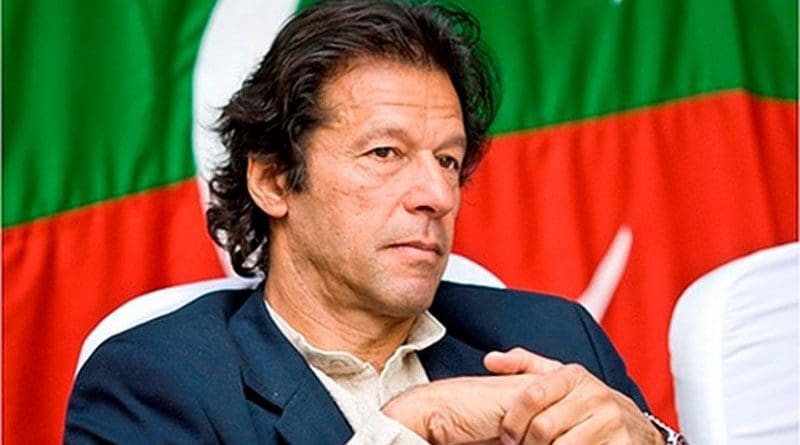How Imran Khan Triumphed Against All Odds: From Jail To Victory – OpEd
By Altaf Moti
On February 8, Pakistan witnessed a historic moment—a day when democracy was tested, and the people’s will prevailed. Former Prime Minister Imran Khan despite being incarcerated emerged victorious in the country’s general elections. His journey from jail to victory was marked by resilience, determination, and the unwavering support of his base.
The Political Landscape
Imran Khan, the charismatic leader of the Pakistan Tehreek-e-Insaf (PTI) party, had been on the receiving end of the Pakistani state’s wrath for the past two years. His top party leadership faced arrests, and some were coerced into switching allegiances. The electoral field seemed designed to diminish any chances of Khan’s success. Heavy restrictions curtailed PTI’s traditional campaigning, and their electoral symbol was banned. But Khan and his supporters refused to be cowed.
The Symbolic Struggle
The PTI’s electoral symbol, the “cricket bat” was snatched away by the top authorities. This setback forced PTI candidates to contest the elections on different symbols, a challenging task in a country where literacy rates remain low. Imagine running a campaign without your party’s iconic symbol—a symbol that resonated with millions of supporters.
Silenced Rallies and Flagless Campaigns
Traditional campaigning avenues were restricted. PTI candidates were denied permission to organize rallies or display party flags. The air crackled with tension, but PTI supporters remained undeterred. They turned to social media and online mobilization, leveraging artificial intelligence and the latest trends to amplify their message. The atmosphere of fear and intimidation did not deter them. Even skeptics who had hinted at a surge in Khan’s support were taken aback by the sheer determination of his base.
The Power of Door-to-Door Campaigning
PTI’s election campaign took an unconventional turn. Instead of grand rallies, it became a grassroots movement. Supporters—men, women, and children—went door-to-door, spreading the party’s vision. Their determination was palpable, fueled by the injustice meted out to their leader.
The Containment Operation
As election day approached, the old guard sensed the seismic shift. PTI candidates were leading by substantial margins, threatening established political dynasties. But the battle was far from over. Allegations of electoral manipulation surfaced, and results slowed down. PTI accused election officers of tampering with results for more than 85 seats.
PTI’s Press Briefing: Unveiling the Truth
On February 16, PTI held a press conference in Islamabad, a gathering that would reverberate across the nation and beyond. National and international journalists witnessed a remarkable display of evidence. PTI presented original and signed Forms 45—the official documents that validate election results. These forms revealed extensive “electoral fraud” in the compilation of the General Elections 2024 results.
Addressing the press, PTI Central Information Secretary Raoof Hasan minced no words. He called the elections the “biggest voter fraud” in the history of Pakistan. “According to our estimates,” he said, “out of 179 seats which were supposed to be ours, only 92 have been given to us. And 87 seats have been taken away from us fraudulently.” PTI vowed to take constitutional and legal steps against this injustice.
International Concerns and a Growing Movement
The United States, Great Britain, the European Union, and other countries expressed serious concern over election rigging in Pakistan. The world watched as PTI’s protest movement gained momentum. Peaceful demonstrations erupted across the country demanding justice and transparency. On first day of their protest movement, PTI leaders and activists faced arrests, including some prominent lawyers.
Nawaz Sharif’s Unexpected Dilemma
Former Prime Minister Nawaz Sharif, once the undisputed political heavyweight, found himself in an unexpected predicament during the 2024 elections. His anticipation of a smooth victory was met with a stark reality—a surge in support for Imran Khan’s PTI.
The Sharif dynasty had long held sway in Pakistan’s political arena. Nawaz Sharif, a seasoned politician, had navigated the corridors of power with finesse. But the winds of change were blowing, and PTI’s momentum threatened to disrupt the status quo. Sharif’s party machinery was confident—perhaps too confident—of securing key seats.
Lahore, the heart of Punjab and a stronghold for Sharif’s party, became the epicenter of the electoral battle. As results trickled in, PTI candidates were leading by substantial margins. But Sharif remained optimistic, claiming victory in Lahore. His supporters cheered, envisioning a continuation of the Sharif legacy.
However, the official tally revealed a different narrative. PTI’s candidates were not only leading; they were doing so convincingly. Yet, discrepancies emerged. How could more than a dozen candidates receive zero votes? It was as if they hadn’t even voted for themselves. The electoral math didn’t add up, and eyebrows were raised.
Nawaz Sharif faced an unsettling reality. His party’s grip on power was slipping. PTI’s strategic backing of independent candidates paid off, challenging the dynastic hold on Pakistani politics. The Sharif camp scrambled to make sense of the unexpected turn of events.
The Aftermath
Imran Khan’s victory—secured from a prison cell—has left an indelible mark on Pakistan’s political landscape. His party won 179 constituencies according to Form 45 of the Election Commission, a two-third majority. But allegations of vote-rigging persist, and the old guard clings to power.
In this tale of resilience, PTI’s triumph transcends party lines. It underscores the power of ordinary citizens, the impact of social media and the indomitable spirit of a leader who refused to be silenced.

